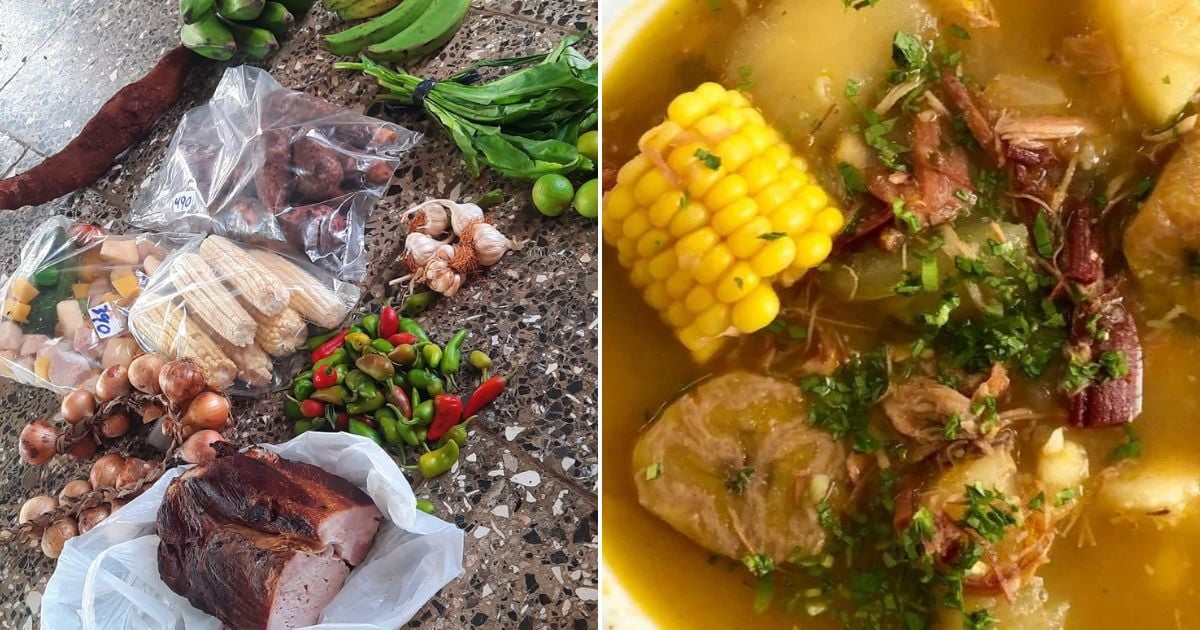A Cuban resident has highlighted the severe impact of inflation in the country by revealing that the cost of preparing a traditional ajiaco stew at home now exceeds 8,000 pesos. Manuel Viera, who lives in Havana, shared his experience on Facebook, showing how much he had to spend on ingredients, reflecting the harsh economic reality faced by Cubans.
"Today we woke up craving ajiaco," Viera wrote, noting that it had been a while since he last prepared the dish. However, he was shocked by the exorbitant cost of the ingredients. He decided to take advantage of the "fair" day to shop for groceries, but even at a farmer's market, he struggled to find everything he needed.
After his search, Viera detailed the prices: 3 pounds of meat for 4,200 pesos, cilantro for 100, corn for 250, onions for 1,000, malanga for 490, a mix of chopped root vegetables for 390, one yuca for 70, a small bunch of burro bananas for 100, and four tiny plantains for 100 as well. Additionally, a can of tomato puree cost him 500 pesos, and so did the cumin and complete seasoning, adding another 500 pesos to the total cost.
When he added everything up, the total came to 8,270 pesos, an alarming figure for a dish that is part of Cuban tradition. "Today, making an ajiaco in this 'tourist paradise' costs over 8,000 pesos," Viera wrote, reflecting on how impossible it would be for a household with two professionals, such as doctors, teachers, or engineers, to afford this dish even once a month.
Worse still, for retirees and pensioners, accessing these basic ingredients seems like an unattainable goal, Viera lamented. He concluded his post with a harsh critique of the country's economic situation: "This is how we Cubans live, or rather, this is how we don't live," expressing the growing frustration over the high prices and the difficult reality faced by the average Cuban.
Cuba ended May with an annual inflation rate increase of 31% compared to the same month last year, according to data shared by Finance Minister Lourdes Rodríguez with a group of MIPYMES representatives. Rodríguez stated that prices are "stable" considering the severity, noting that the cumulative rate from January to May is 15%.
"We are on a trend that is not growing faster than in 2023, but it is also not stopping its growth," she warned. This "hopeful" trend was confirmed last June when the Cuban regime stated that the economic situation "continues to be very tense," but that prices were rising at a slower pace.
"Monthly inflation showed a slight deceleration in April: from 4.07 in March to 2.13. Compared to March 2023, the annual inflation rate, which reached 46.4%, has been slowing down," said Economy and Planning Minister Joaquín Alonso Vázquez in a Council of Ministers meeting.
Understanding Cuba's Inflation Crisis
Given the current economic challenges in Cuba, many are seeking to understand the specifics of the situation. Here are some frequently asked questions and their answers to provide clarity.
Why has the cost of food in Cuba risen so dramatically?
The cost of food has risen significantly due to a combination of factors including inflation, economic mismanagement by the Cuban government, and external sanctions that have impacted the supply chain.
What is ajiaco and why is it significant in Cuban culture?
Ajiaco is a traditional Cuban stew made with a variety of root vegetables and meats. It holds cultural significance as a symbol of Cuban heritage and cuisine, often prepared for family gatherings and special occasions.
How are Cuban families coping with the rising costs of food?
Many Cuban families are struggling to cope with the rising costs by cutting back on non-essential expenses, relying on remittances from relatives abroad, and seeking alternative sources of income to make ends meet.
